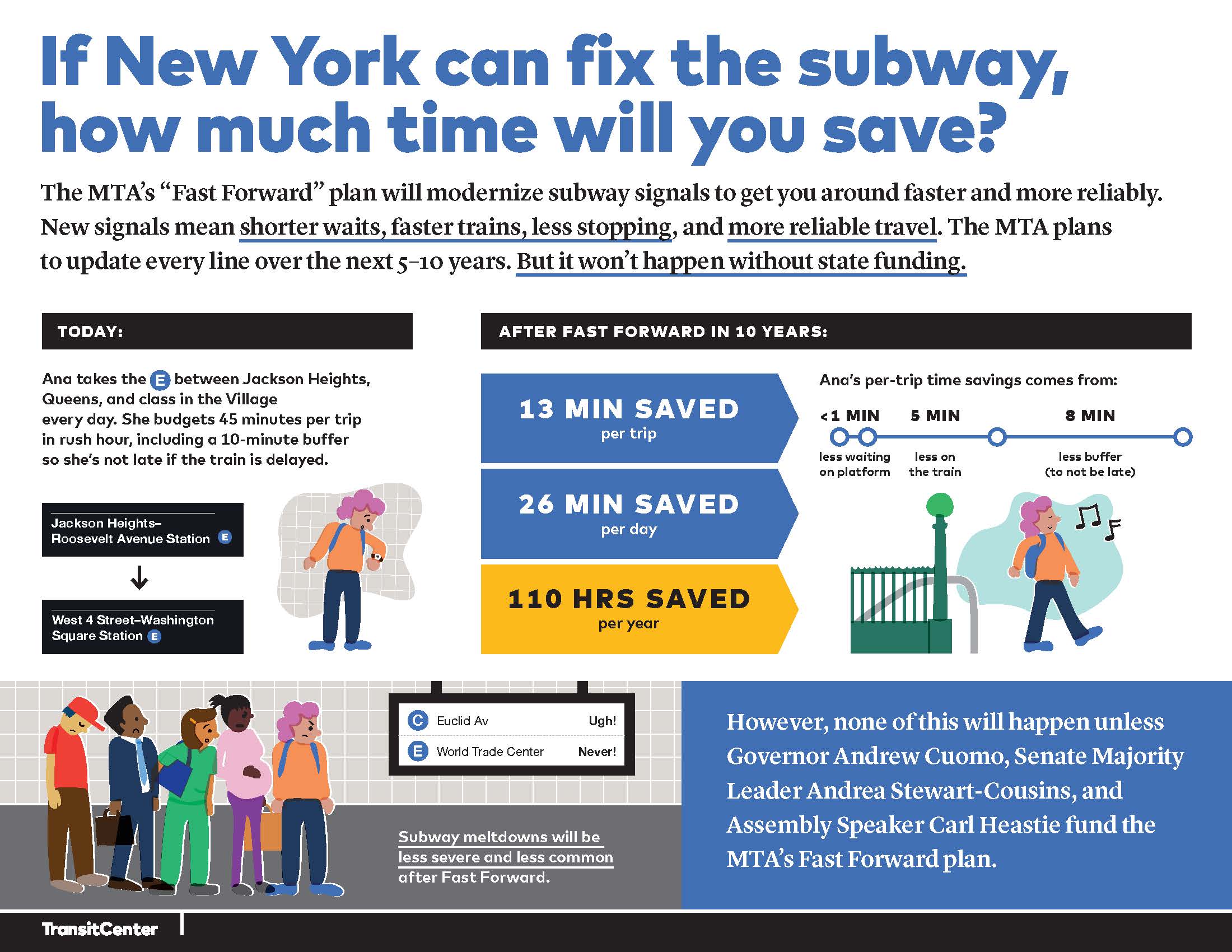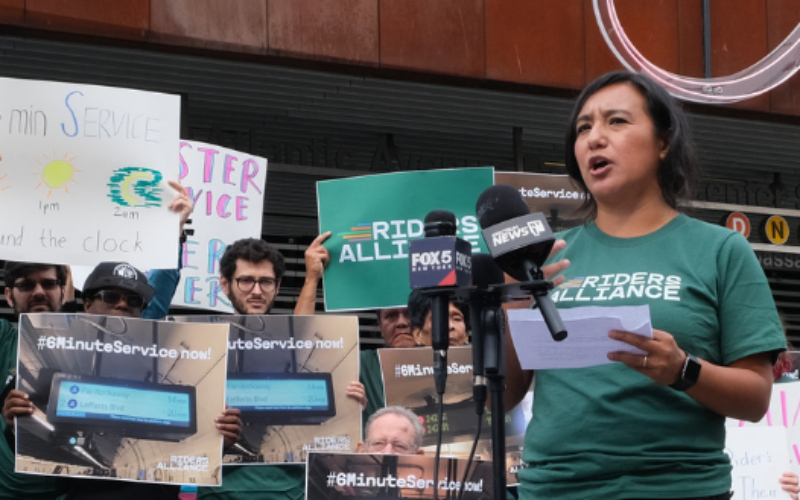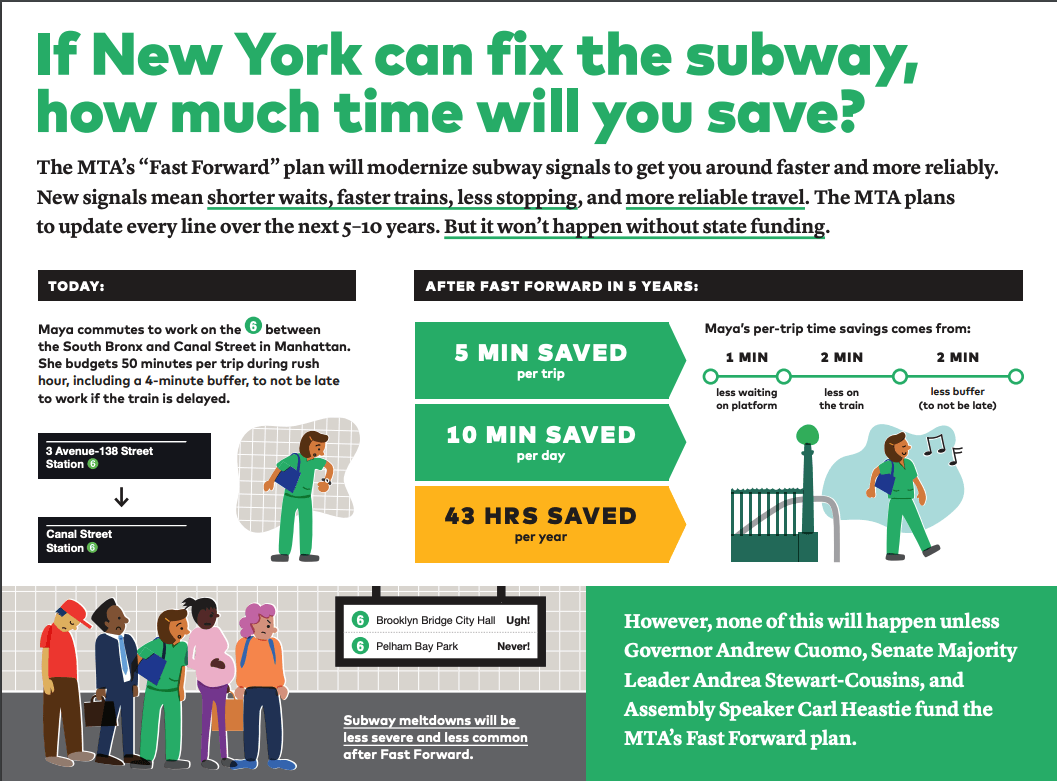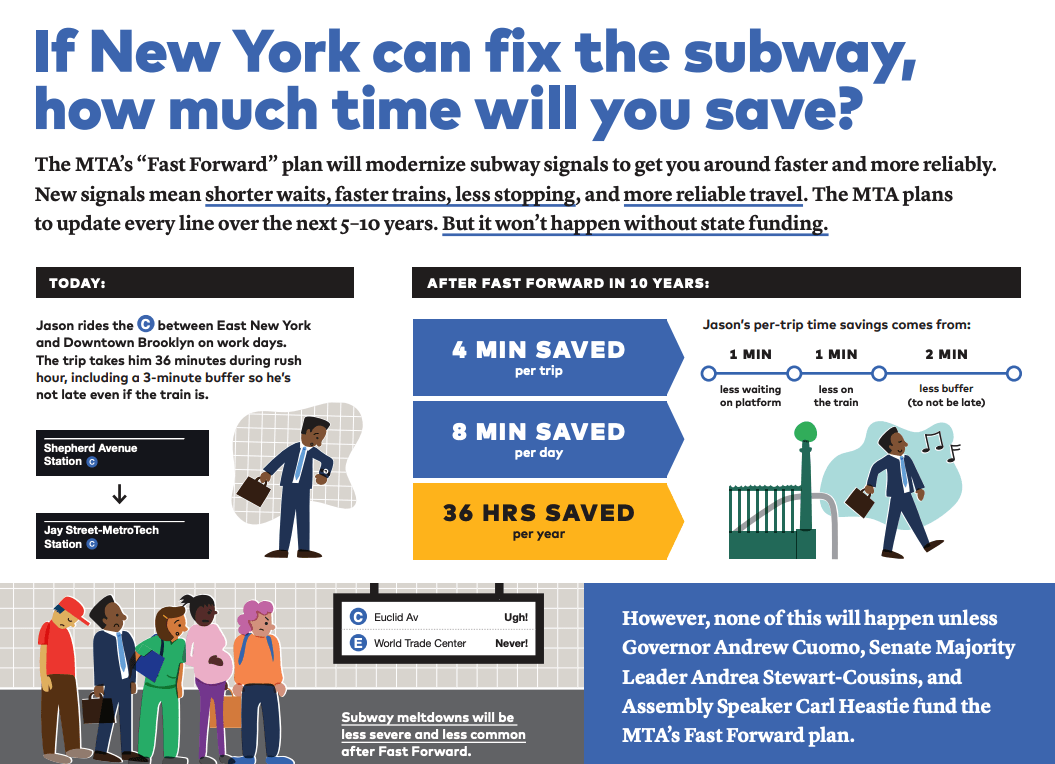
How much time will New Yorkers save from the subway signal improvements in the MTA’s Fast Forward plan? According to our new analysis, a single commuter traveling from the Bronx, Queens, or Brooklyn to the Manhattan central business district stands to gain days of their own time back over the course of a year. As state legislators debate how to fund Fast Forward, this analysis shows what’s at stake for their constituents, who will experience shorter wait times, faster trains, and greater reliability.
Our fact sheets show three time savings scenarios for subway commuters. Someone taking the train from Jackson Heights to West 4th Street, for instance, would save 26 minutes a day, which adds up to 110 hours per year. For parents, that could mean saving nearly $2,000 in child care costs. That’s enough time to make breakfast for your kids in the morning or read to them at night. It’s time someone could spend walking her dog in the evening, or fitting in that SoulCycle class. And that’s 110 hours you won’t spend fretting about whether you’ll be late because your train was delayed.
The largest potential source of revenue to fund Fast Forward is congestion pricing. Resistance to congestion pricing is often framed in terms of the impact on car commuters who live outside Manhattan. But there are far more subway commuters living outside Manhattan who’ll save big chunks of time thanks to investments in modern signals than car commuters who’ll pay a congestion fee.
The cumulative time savings for all subway riders adds up to millions of hours per year. In Assembly Speaker Carl Heastie’s district, for instance, the 9,000 riders commuting to the Manhattan CBD will save at least 300,000 hours annually. In State Senator Leroy Comrie’s district in Queens, 25,000 subway commuters would save 838,000 hours each year.
If the Fast Forward plan is fully funded, the MTA plans to resignal substantial portions of every subway line in the city within the next 10 years, much sooner than under the previous 40-year timeline. As our fact sheets demonstrate, benefits for subway riders from funding Fast Forward are immense, and so is the cost of inaction in Albany. We can’t spend another 40 years stuck with slow and unreliable subway service on a typical day, and paralyzing service meltdowns when things go wrong.
For this analysis, travel time savings were calculated by comparing current trip data from the MTA to predicted travel times on lines slated for upgrades under Fast Forward.
 On the Brink: Will WMATA’s Progress Be Erased by 2024?
On the Brink: Will WMATA’s Progress Be Erased by 2024?
The experience of being a WMATA rider has substantially improved over the last 18 months, thanks to changes the agency has made like adding off-peak service and simplifying fares. Things are about to get even better with the launch of all-door boarding later this fall, overnight bus service on some lines starting in December, and an ambitious plan to redesign the Metrobus network. But all of this could go away by July 1, 2024.
Read More Built to Win: Riders Alliance Campaign Secures Funding for More Frequent Subway Service
Built to Win: Riders Alliance Campaign Secures Funding for More Frequent Subway Service
Thanks to Riders' Alliance successful #6MinuteService campaign, New York City subway riders will enjoy more frequent service on nights and weekends, starting this summer. In this post, we chronicle the group's winning strategies and tactics.
Read More
